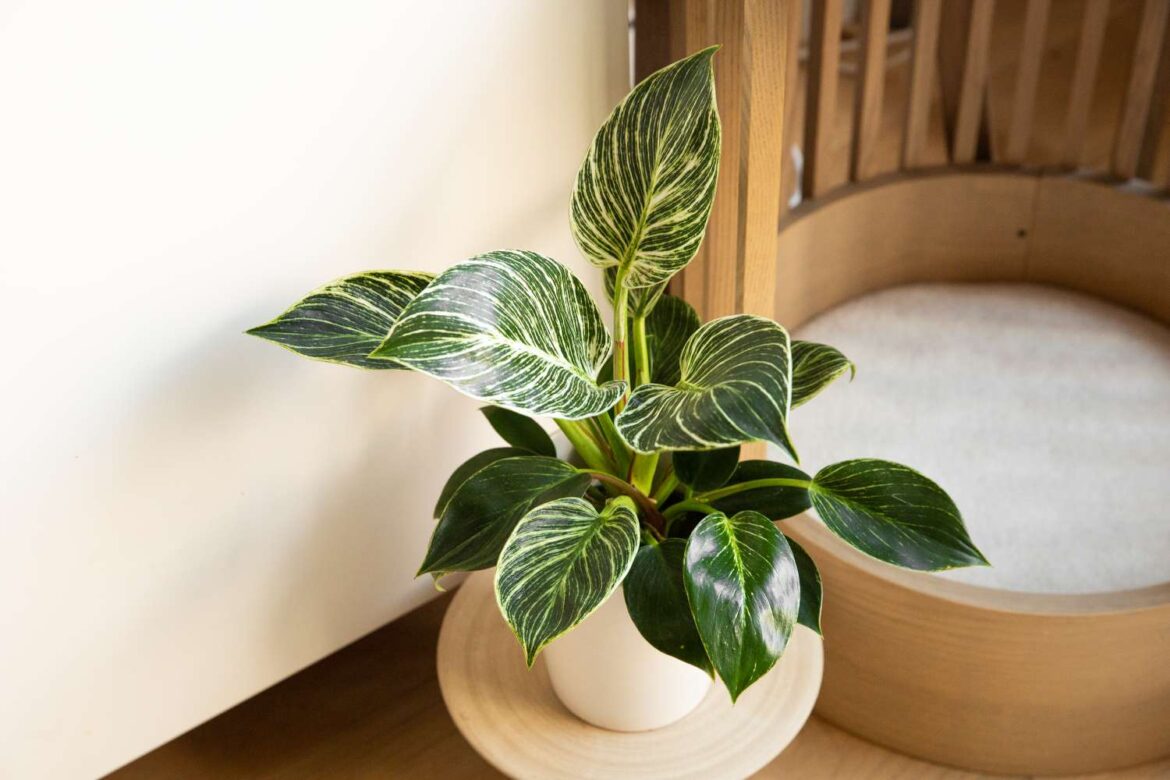
Philodendron plants are the most common household plants. The plant stands out because of its unique creamy and yellow texture across the leaves.
Negligence while taking care of your plant can put the health of the plant at stake.
In this article, you will take all steps you need to keep in consideration while taking care of your Birkin philodendron.
Getting to Know Your Philodendron Birkin
The birkin philodendron plant has beautiful dark green leaves. The vibrant colors give a shiny look. The leaves have a variegation of yellow and green lines which give the plant a unique look. The color strips around the leaves become more pronounced while plants mature. The birkin philodendron is a native of tropical regions of America. The natural habitat of this philodendron consists of more warm humid levels of rainforest. The birkin philodendron belongs to the family of Araceae. The plant can grow up to 2 to 3 feet tall and the same in width.
Optimal Growing Conditions
The plant needs specific conditions to thrive fully. Here are the points to keep in consideration:
Light Requirements
Like all other philodendrons, the Birkin enjoys bright indirect sunlight. The northeast-facing window would be the perfect spot for the lant. If the plant is getting enough light its vibrancy will be reduced. More exposure to light can damage the leaves of the plants. Make sure to place it in the right spot.
Watering Schedule
Instead of watering the plant time, water it according to its needs. The philodendron prefers moist soil. Soggy soil can cause root rot. Before watering make sure the first inch of the soil is dry. You can check it with your fingers. After watering make sure there is no excess water and the drainage hole of the pot is perfectly working.
Temperature and Humidity
The plant enjoys a more humid condition if available. Birkin philodendrons can survive in normal household humid levels. To give a good boost of humidity to your plants you can increase it. Place a humidifier near the plant or a pebble tray filled with water can increase the humidity. The preferred temperature for the plant is 65 °F to 80 °F. The temperature below 60 °F can cause damage to the plant.
Soil and Fertilization Needs
The overall health and growth of the plant depend and the quality of the soil and the amount of fertilizer:
Choosing the Right Soil
The plant prefers well-drained soil which can hold enough moisture for the plant. You make your soil rich with nutrients and chemical-free ingredients.
Fertilization Routine
The fertilization of your plant provides an extra boost in the growth of the plant. Use a balanced liquid-based fertilizer. The best time to use the fertilizer is spring and summer. Do not use it in winter and fall. Apply fertilization once a month after watering the plant.
Pruning and Maintenance
For better and thicker growth of plants, the pruning and maintenance are important:
Regular Pruning Techniques
The plant is slow-growing and does not prune often. You can look for dead or leaves. Cut them off to divert focus towards healthy growth. Use sterilized equipment or else your plant can get infected.
Cleaning and Care
For the maintenance of the plant inspect your plant for any dead leaves or any signs of bugs and insects so you can treat it on time. Negligence towards maintenance can lead to serious damage to your plant.
Common Problems and Solutions
Here are some common problems that every plant owner faces:
Pest Management
The mealybugs, scales, and spider mites are the most common pests that damage the health of your plant. You can inspect the plant and if you find any, wipe them off with a cotton swab dipped in rubbing alcohol.
Disease Prevention
The fungal infection is the most common disease that leads to the root. The reason can be overwatering and poor drainage system of pot. The roots stay in water for too long leading to the root rot. To prevent it, place your plant in the bright indirect sunlight and cut any damaged leaves and roots. Make sure the pot drainage hole is working fine.
Troubleshooting Leaf Issues
There are other common problems such as yellow leaves, curling leaves, and brown spots on leaves. This reason can be overwatering and less exposure to light, more use of fertilizers, and pests, and less watering and more exposure to light. To treat it, find the main reason and take action accordingly.
Propagation Tips
The propagation of birkin philodendrons is easy. Use sterilized equipment. Take a stem of 4 to 5 inches long with 4 to 5 leaves on it. Remove the leave from the button exposing nodes. Place your cutting into the water jar. Keep it in a humid and warm place. Change the water daily to prevent bacterial infection. Once you start the roots are growing place the stem into the soil.
Caring for New Plants
Here are some caring tips for your new plant:
- The new plant cannot tolerate bright sunlight make sure the exposure of light as per the needs of the plant
- Use soil rich in nutrients and well drained that can hold the moisture
- Use a good well balanced liquid fertilizer
- Maintain the temperature and humidity around the plant
Conclusion
The Birkin philodendron has beautiful leaves and unique variegation. The plant is the perfect addition to increase the beauty of your home. The plants are easy to care for but need attention to thrive. For the best growth make sure the environment is as per the needs of the plant. Any change in the environment can cause an impact on the well-being of the plant.


